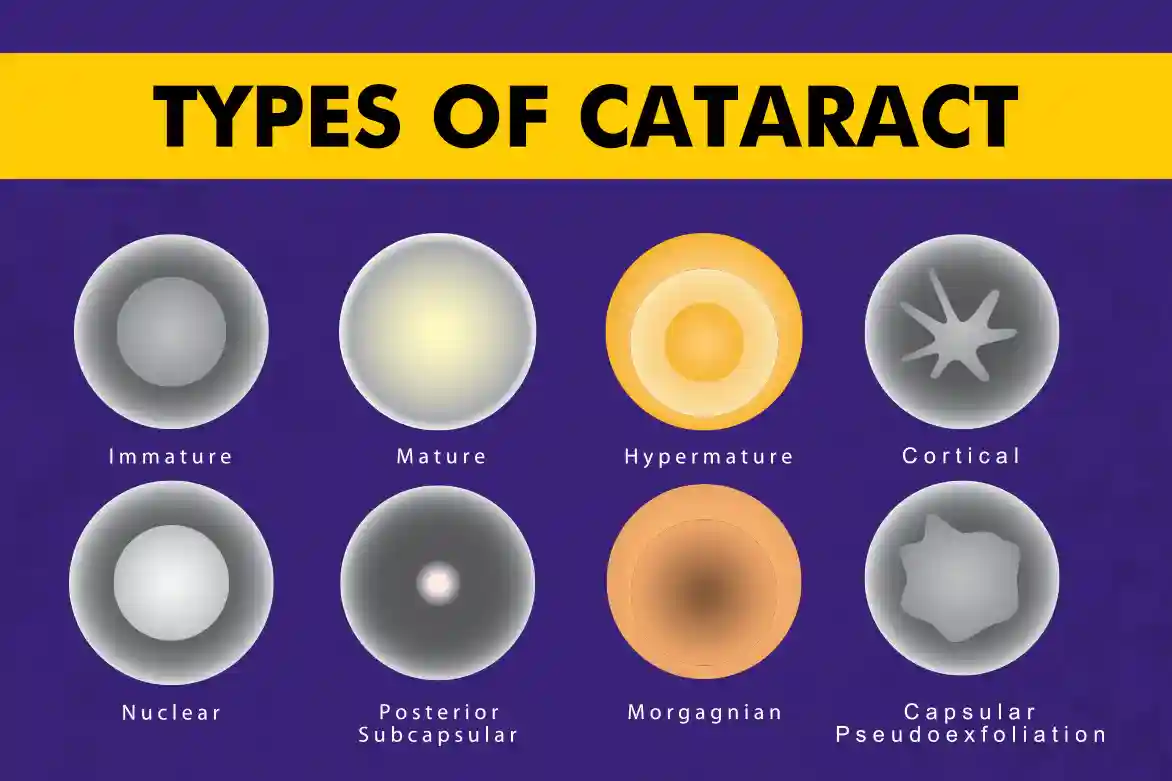Cataracts are a widespread eye condition that impacts millions of individuals globally. It does the clouding of the eye’s lens, resulting in blurry vision and difficulty with clarity. Cataracts can develop slowly over time or suddenly due to an injury or other underlying health issues.
In this in-depth guide, we will delve into the various types of cataracts and offer a comprehensive understanding of each. By the end, you will have gained a deeper insight into all kinds of cataracts, enabling you to identify symptoms and seek appropriate treatment.
Understanding Cataracts
Before diving into the various types of cataracts, it’s important to have a basic understanding of what cataracts are and how they affect vision. The lens of the eye plays a crucial role in focusing light onto the retina, which then sends signals to the brain to create visual images. However, when the lens becomes cloudy, it hinders the passage of light, resulting in blurry or distorted vision.
Cataracts can develop for various reasons, including aging, trauma, exposure to radiation, and certain medical conditions. Understanding the underlying causes can help in identifying the specific type of cataract and determining the most suitable treatment approach.
6 Major Kinds of Cataracts
There are six major kinds of cataracts, each with its own distinct characteristics and causes. These include age-related cataracts, traumatic cataracts, and radiation cataracts. Let’s take a closer look at each of them:
– Age-Related Cataracts: As the name suggests, these cataracts develop as a natural part of the aging process. They typically occur in individuals aged 60 and above and progress slowly over time.
– Traumatic Cataracts: Traumatic cataracts are caused by an injury or trauma to the eye. They can occur immediately after the injury or develop gradually over time as a result of the damage.
– Radiation Cataracts: Exposure to high levels of radiation, such as during cancer treatment or nuclear accidents, can lead to the development of radiation cataracts. These cataracts may take years to develop after exposure.
– Pediatric Cataracts: These cataracts are present at birth or develop shortly after. They can be caused by genetic factors, infections during pregnancy, or other underlying health conditions.
– Secondary Cataracts: Secondary cataracts can develop as a complication of other eye conditions or surgeries. For example, they may occur after a patient undergoes surgery to treat another eye problem, such as glaucoma or retinal detachment.
– Posterior Subcapsular Cataract: This type of cataract forms at the back of the lens and often affects younger individuals. It can be associated with certain medical conditions, such as diabetes or the prolonged use of corticosteroid medications.
Each type of cataract has its own set of risk factors and treatment options. It is essential to consult with an ophthalmologist to determine the appropriate course of action based on your specific circumstances.
Types of Cataracts: You Should Know
In addition to the major kinds of cataracts, there are several other types that you should be aware of. These include posterior polar cataract, mature cataract, and immature cataract.
– Posterior Polar Cataract: This rare type of cataract forms at the back of the lens, near the polar region. It can cause significant visual impairment and may require surgical intervention.
– Mature Cataract: A mature cataract refers to a cataract that has reached its advanced stage, resulting in severe vision loss. Surgery is typically recommended to remove the cataract and restore vision.
– Immature Cataract: An immature cataract is in its early stages of development and may not yet cause significant vision problems. Regular monitoring is essential to determine if and when treatment becomes necessary.
– Cortical Cataract: Cortical cataracts form in the outer rim of the lens and gradually extend towards the center. They are characterized by white, wedge-like opacities and can cause glare and difficulty with contrast sensitivity.
– Rosette Cataract: Rosette cataracts are a rare type of cataract that appear as star-shaped opacities in the lens. They can cause significant visual disturbances and may require surgical intervention.
– Nuclear Cataract: Nuclear cataracts develop in the central nucleus of the lens. They are typically associated with aging and can result in nearsightedness and difficulty seeing in low light conditions.
– Cataract Grading: Cataracts can be graded on a scale from 1 to 4, with 1 indicating mild cataracts and 4 indicating severe cataracts. The grading takes into account factors such as visual acuity, lens opacity, and glare sensitivity.
– Christmas Tree Cataract: Christmas tree cataracts are characterized by spokelike opacities in the lens that resemble the branches of a Christmas tree. They are typically associated with certain genetic conditions and may require surgical intervention.
– Complicated Cataract: Complicated cataracts refer to cataracts that are accompanied by other eye conditions or complications. These cataracts may require specialized treatment and close monitoring.
– Lamellar Cataract: Lamellar cataracts, also known as zonular cataracts, affect specific layers of the lens. They can cause blurred or distorted vision and may require surgical intervention.
– Congenital Cataract: Congenital cataracts are present at birth or develop during the first few years of life. They can be caused by genetic factors, infections during pregnancy, or metabolic disorders.
– Posterior Capsular Opacification: Posterior capsular opacification, also known as after-cataract, can occur after cataract surgery. It involves the clouding of the posterior capsule of the lens and can be treated with a laser procedure called YAG capsulotomy.
Summary
In summary, cataracts are a common eye condition that can significantly impact vision. By understanding the different types of cataracts, their causes, and treatment options, you can take proactive steps in managing your eye health.
Remember to consult with an ophthalmologist for a comprehensive evaluation if you suspect you have cataracts or are experiencing changes in your vision. Early detection and appropriate treatment can help preserve and improve your vision, allowing you to enjoy a clear and vibrant world.
FAQs
What are the 3 types of cataracts?
Nuclear Sclerotic, Cortical and Posterior Subcapsular are three main types of cataracts that are classified based on where and how they develop in the eye.
What are the 4 types of cataract lenses?
The 4 types of cataract lenses (IOLs) are monofocal, multifocal, toric, and EDOF (extended depth of focus).
What are the 4 types of senile cataract?
The four types of senile cataract are nuclear sclerotic, cortical, posterior subcapsular, and mixed cataract.
What are the four stages of cataracts?
The four stages of cataracts are early, immature, mature, and hypermature.
What are the different types of cataracts?
Different types of cataracts include age-related (senile), congenital (kids), traumatic, secondary (resulting from other eye conditions or medical treatments), and radiation-induced cataracts.
How do age-related cataracts differ from other types?
Age-related cataracts develop due to aging of the eye’s lens, whereas other types may result from factors like genetics, trauma, medication, or medical conditions.
Are there specific symptoms associated with each type of cataract?
Specific symptoms can vary by the type of cataract but commonly include blurred vision, glare sensitivity, and difficulty seeing in low light.
Can cataracts have different causes depending on the type?
Yes, cataracts can have different causes depending on the type, such as aging, trauma, medications, or underlying medical conditions.
Do certain types of cataracts progress more rapidly than others?
The rate of progression can vary among different types of cataracts, with some progressing more rapidly than others.
Are some types of cataracts more common in certain age groups or demographics?
Certain types of cataracts may be more common in specific age groups or demographics due to factors such as genetics, lifestyle, or environmental exposures.





